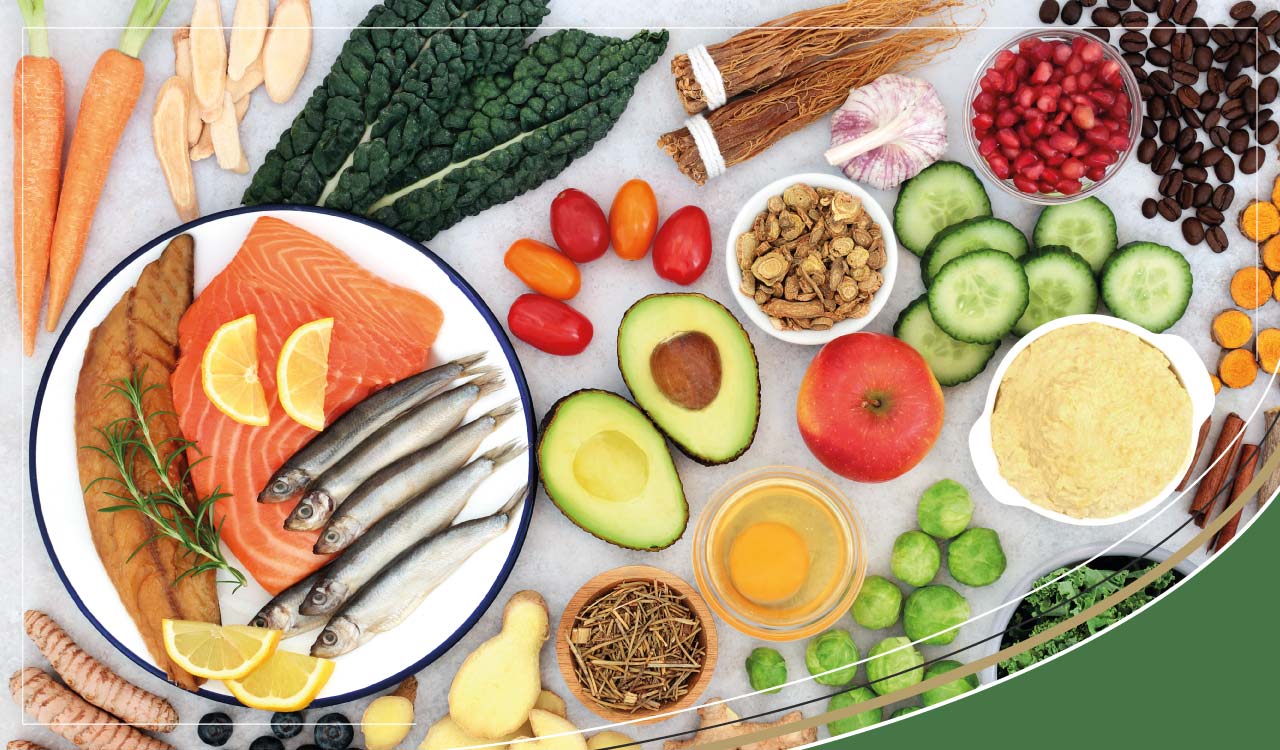Bladder Health
How to reduce acidity in urine
By Anna Sawkins
Feb 23, 2022

Changing your diet can cause urine pH to become less acidic which can help support a healthy bladder.
Recent research shows there are many significant health benefits associated with a urine pH closer to neutral than previously thought. Or more specifically, a less acidic urine. A highly acidic urine pH is now thought to be less effective at restricting bacterial growth in the Urinary Tract and the formation of Kidney Stones. By reducing your intake of acidifying foods and increasing alkalising foods, your diet can adjust the pH of urine and saliva, though the pH of other areas of the body will remain largely unaffected.
The chart of alkalising and acidifying foods below is a general guide. The effect of some foods may differ from person to person. It depends to an extent on the enzymes that your particular set of gut bacteria produce. Consult a good nutritionist before making any sudden or substantial changes to your diet.
What is the ideal urine pH?
The pH scale (potential of Hydrogen) is a measure of water soluble substances ranging from 0 to 14, although some very strong acids and very strong bases can measure outside this range. Numbers below 7 are acidic, numbers above 7 are alkaline (or basic) and a pH of 7 is neutral. Pure, or distilled water, which has had all impurities removed has a pH of 7. A urine pH of 6.8 - 7.0 is considered healthy in humans and will hinder the growth of most bladder and urinary tract pathogens.
Changing the Body pH
While all bodily fluids can have their pH levels measured, only some can be adjusted through diet. Bodily fluids include: saliva, blood, stomach acid, urine, tears, mucus, intestinal juice, synovial fluid and cerebrospinal fluid amongst others. Even genitals, the skin and muscles can have their pH measured. When testing the pH of any of the body's fluid, keep in mind that during it's healing process, results may initially indicate acidic if the body is removing acid causing minerals. So test regularly over a period of a few days.
Saliva
Testing the pH of saliva when you awake, before consuming any food or drink, can act as an early warning that your body pH is becoming acidic. A healthy saliva upon awakening has a pH of between 6.8 and 7.2 and should rise to between 7.4 and 8.4 after consuming any alkaline food or drinks. Failing to produce a more alkaline saliva indicates a mineral deficiency which can result in poorer digestion. Ideally, you want to maintain the pH of your saliva between 6.8 and 8.4 throughout the day to help maintain general health. An acidic saliva pH of between 4.5 and 6.5 suggests a Calcium and Magnesium deficiency which can have wide ranging symptoms including: muscle weakness and spasms, difficulty sleeping, sensitivity to noise, brittle teeth, nails and bones.
Blood
The pH of Blood remains at a stable 7.4 in healthy humans due in part to the neutralising effects of carbonic acid and bicarbonate buffers. Diet has little or no impact on the pH of blood, its regulated by organs such as the lungs and kidneys. Blood pH that exceeds 7.8 (a condition known as acidosis) or falls below 6.8 (a condition known as alkalosis) is life threatening.
Attempts to change the blood pH by diet are counteracted by the body. If the blood is in danger of becoming very acidic, buffering minerals such as calcium and magnesium from the body's reserves would be released to restore the pH balance. Conversely, if blood were in danger of becoming too basic (high alkaline) carbonic acid would be released to neutralise the excess bases.
Stomach Acid
Gastric acid, or stomach acid, a digestive solution produced by cells that line the stomach, contains hydrochloric acid (HCI). This highly acidic solution steralises food, destroying harmful bacteria, and helps digestion by breaking the bonds linking amino acids (proteolysis). The normal human stomach has an acidic pH that ranges from approximately 1.0 to 3.0 when not digesting it's contents. A stomach in the process of digesting food will have a slightly higher pH of between 4 and 5. During the next few hours, as the digested contents leave the stomach and travel through the intestines, bicarbonate ions are released from the pancreas to neutralize the mixture.
Skin
The skin has a very thin protective layer, known as the acid mantle, that acts as a barrier to bacteria and viruses. The acid mantle, made up of sebum, an oily secretion of the sebaceous glands, and lactic and amino acids from sweat, has a pH that ranges from 4.5 to 6.2 with 5.5 being normal. Maintaining an acidic skin pH is said to help reduce everything from wrinkles to acne. Restoring the natural balance of the skin's pH is as easy as mixing one teaspoon of either lemon juice or apple cider vinegar with a glass of water and wiping down the skin.
A healthy vaginal pH ranges from an acidic 3.8 to 4.5. Urinary Tract Infection, Bacterial Vaginosis and Yeast Infection can all upset the vagina's bacterial equilibrium and cause the pH to rise.
How to make Urine More Alkaline
Changing your diet is the easiest way to make your urine alkaline. Citrus fruit will have an alkalising effect on urine despite being acidic. Other fruits and vegetables are generally more alkaline and help alkalise the urine. Diets which include large volumes of fatty foods, red meats, alcohol and cranberry tend to be more acidic.
Maintaining a balanced diet can significantly reduce the severity of urinary tract infection symptoms as bacterial growth decelerates.
Testing Urine pH
You can check your urine pH in the privacy of your own home with urine test strips. Monitoring the pH of your urine will help you understand the progress of a urinary tract infection. Most bacteria feed on the acids in urine.
The color chart below shows the concentration level for each of the elements above each block of color. When testing the pH of your urine for example, any greenish color would indicate a basic, or alkaline urine.
Alkalising Foods
Alkalising Vegetables
- Alfalfa
- Barley Grass
- Beets
- Beet Greens
- Broccoli
- Cabbage
- Carrot
- Cauliflower
- Celery
- Chard Greens
- Chlorella
- Collard Greens
- Cucumber
- Dandelions
- Dulce
- Edible Flowers
- Eggplant
- Fermented Vegetables
- Garlic
- Green Beans
- Green Peas
- Kale
- Kohlrabi
- Lettuce
- Mushrooms
- Mustard Greens
- Nightshade Vegetables
- Onions
- Parsnips (high glycemic)
- Peas
- Peppers
- Pumpkin
- Radishes
- Rutabaga
- Sea Vegetables
- Spinach
- Spirulina
- Sprouts
- Sweet Potatoes
- Tomatoes
- Watercress
- Wheat Grass
- Wild Greens
Alkalising Fruits
- Apple
- Apricot
- Avocado
- Banana (high glycemic)
- Berries
- Blackberries
- Cantaloupe
- Cherries
- Coconut
- Currants
- Dates
- Figs
- Grapes
- Grapefruit
- Honeydew Melon
- Lemon
- Lime
- Muskmelons
- Peach
- Pear
- Pineapple
- Raisins
- Raspberries
- Rhubarb
- Strawberries
- Tangerine
- Tomato
- Tropical Fruits
- Umeboshi Plums
- Watermelon
Alkalising Oriental Vegetables
- Maitake
- Daikon
- Dandelion Root
- Shitake
- Kombu
- Reishi
- Nori
- Umeboshi
- Wakame
Alkalising Spices and Seasonings
- Cinnamon
- Curry
- Ginger
- Mustard
- Chili Pepper
- Sea Salt
- Miso
- Tamari
- All Herbs
Alkalising Proteins
- Almonds
- Chestnuts
- Millet
- Tempeh (fermented)
- Tofu (fermented)
- Whey Protein Powder
Alkalising Minerals
- Cesium: pH 14
- Potassium: pH 14
- Calcium: pH 12
- Magnesium: pH 9
- Sodium: pH 14
- Sodium Chloride (salt): pH 7
Other Alkalising Foods
- Apple Cider Vinegar
- Bee Pollen
- Lecithin Granules
- Molasses
- Blackstrap
- Probiotic Cultures
- Soured Dairy Products
- Green Juices
- Vegetable Juices
- Fresh Fruit Juice
- Mineral Water
- Alkaline Antioxidant Water
Alkalising Sweeteners
- Stevia
Acidifying Foods
Acidifying Vegetables
- Corn
- Lentils
- Olives
- Winter Squash
Acidifying Fruits
- Blueberries
- Canned or Glazed Fruits
- Cranberries
- Currants
- Plums*
- Prunes*
Acidifying Proteins
- Bacon
- Beef
- Carp
- Clams
- Cod
- Corned Beef
- Fish
- Haddock
- Lamb
- Lobster
- Mussels
- Organ Meats
- Oyster
- Pike
- Pork
- Rabbit
- Salmon
- Sardines
- Sausage
- Scallops
- Shrimp
- Scallops
- Shellfish
- Tuna
- Turkey
- Veal
- Venison
Acidifying Grains
- Amaranth
- Barley
- Bran
- Wheat
- Oats
- Corn
- Cornstarch
- Hemp Seed Flour
- Kamut
- Oats (rolled)
- Oatmeal
- Quinoa
- Rice (all)
- Rice Cakes
- Rye
- Spelt
- Wheat
- Wheat Germ
- Noodles
- Macaroni
- Spaghetti
- Bread
- Crackers
- Soda
- Flour white
- Flour wheat
Acidifying Beans and Legumes
- Black Beans
- Chick Peas
- Green Peas
- Kidney Beans
- Lentils
- Pinto Beans
- Red Beans
- Soy Beans
- Soy Milk
- White Beans
- Rice Milk
- Almond Milk
Acidifying Fats and Oils
- Avocado Oil
- Butter
- Canola Oil
- Corn Oil
- Hemp Seed Oil
- Flax Oil
- Lard
- Olive Oil
- Safflower Oil
- Sesame Oil
- Sunflower Oil
Acidifying Nuts and Butter
- Cashews
- Legumes
- Peanuts
- Peanut Butter
- Pecans
- Tahini
- Walnuts
Acidifying Dairy
- Butter
- Cheese
- Ice Cream
- Ice Milk
Acidifying Juices
- Cranberry
- Orange
- Nectarine
Acidifying Sweeteners
- Carob
- Sugar
- Corn Syrup
Acidifying Alcohol
- Beer
- Spirits
- Hard Liquor
- Wine
Acidifying Junk Food
- Coca-Cola: pH 2
- Beer: pH 2.5
- Coffee: pH 4
Acidifying Drugs and Chemical Foods
- Catsup
- Cocoa
- Coffee
- Vinegar
- Mustard
- Pepper
- Soft Drinks
- Aspirin
- Chemicals
- Medicinal
- Psychedelic
- Pesticides
- Herbicides
- Tobacco
*These foods leave an alkaline ash but have an acidifying effect on the body. Although it might seem that citrus fruits would have an acidifying effect on the body, with the exception of lemons, the citric acid they contain actually has an alkalizing effect in the system.
 Free Shipping on orders $110+ AUD
Free Shipping on orders $110+ AUD
 Worldwide Delivery Available
Worldwide Delivery Available
 Rated 4.9 out of 5 on Trustpilot
Rated 4.9 out of 5 on Trustpilot

















